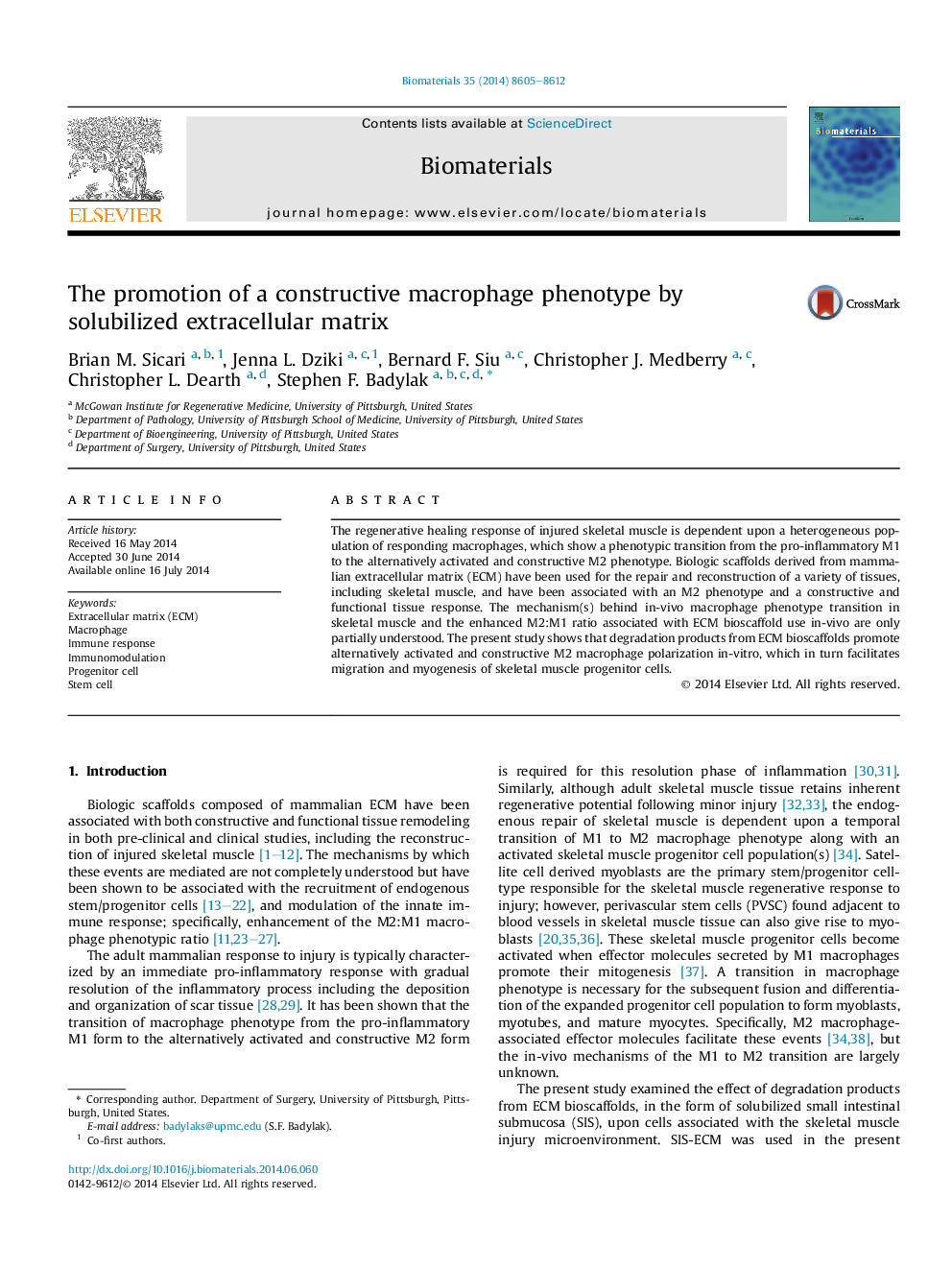| Article ID | Journal | Published Year | Pages | File Type |
|---|---|---|---|---|
| 10227380 | Biomaterials | 2014 | 8 Pages |
Abstract
The regenerative healing response of injured skeletal muscle is dependent upon a heterogeneous population of responding macrophages, which show a phenotypic transition from the pro-inflammatory M1 to the alternatively activated and constructive M2 phenotype. Biologic scaffolds derived from mammalian extracellular matrix (ECM) have been used for the repair and reconstruction of a variety of tissues, including skeletal muscle, and have been associated with an M2 phenotype and a constructive and functional tissue response. The mechanism(s) behind in-vivo macrophage phenotype transition in skeletal muscle and the enhanced M2:M1 ratio associated with ECM bioscaffold use in-vivo are only partially understood. The present study shows that degradation products from ECM bioscaffolds promote alternatively activated and constructive M2 macrophage polarization in-vitro, which in turn facilitates migration and myogenesis of skeletal muscle progenitor cells.
Keywords
Related Topics
Physical Sciences and Engineering
Chemical Engineering
Bioengineering
Authors
Brian M. Sicari, Jenna L. Dziki, Bernard F. Siu, Christopher J. Medberry, Christopher L. Dearth, Stephen F. Badylak,
